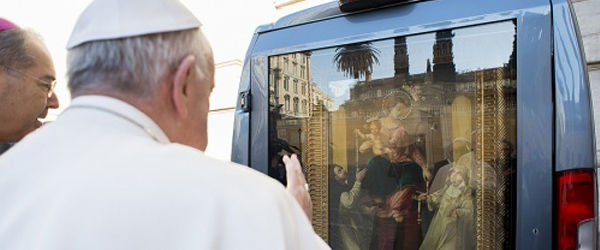Inner-city Los Angeles students going to Catholic schools graduate from high school and then go on to college at significantly higher rates than peers attending public schools, the study asserted. Conducted by the School of Education’s Center for Catholic Education, the study followed a group of students from low-income families who received tuition awards from the Catholic Education Foundation (CEF) between 2003 and 2008 to attend Catholic schools. They closely resembled the economic, ethnic-racial and personal backgrounds of students in area public schools. Nearly 90 percent of students supported by CEF in the high school graduating class of 2008 were ethnic minorities. More than 98 percent of the Catholic school students graduated from high school in four years, compared to just 69 percent of public school students in the same period. And most of the CEF-supported students were the first members of their families to go to college.Concerning taking University of California and California State University required courses, 90 percent of students at schools supported by CEF completed classes required for admission to the UC and CSU systems. This figure compared with only 31 percent of students at comparable Los Angeles public high schools.Taking the SAT examination is a necessary step to getting accepted to most U.S. colleges today. More than seven out of 10 Catholic school students took the exam, compared to 40 percent of public school students. And across the verbal, math and writing sections of the SAT, Catholic school students had higher scores.“So there’s the great case to be made for what Catholic schools contribute, not simply to the Catholic community but to the common good of the greater society of this country and particularly powerful for our children of the inner city.” —Shane Martin, dean, LMU School of EducationShane Martin, dean of the LMU School of Education, co-authored the study along with fellow faculty member Ignacio Higareda, research assistant Jose Chavez and LMU doctoral candidate Karen Holyk-Casey. “These are highly educationally disadvantaged children in terms of socio-economic status, families and background,” Martin told The Tidings. “And yet these students are doing extremely well.“This study demonstrates the success Catholic schools have educating some of the poorest youth in Los Angeles. Students attending Catholic schools in inner-city neighborhoods are completing a rigorous curriculum, outperforming their peers on national standardized tests, graduating from high school in exceptional numbers and going on to college at a very successful rate.”Martin — an educational anthropologist by training and expert in intercultural education, cultural diversity, charter schools and Catholic schools — notes a number of patterns “shake out” from the data about why urban Catholic schools in the Archdiocese of Los Angeles work so well. He says the culture of the Catholic school is quite unique. First, there is the religious dimension, how faith and values bring administrators, teachers, parents and students together to form a real sense of community and belonging, which helps students get through difficult times.Another aspect of the culture is a positive peer atmosphere. “It’s cool to study. It’s cool to carry books. It’s cool to do well,” he said. “But the culture in some public schools is it’s not cool, you know, to be a brain. That’s not a problem in local Catholic schools. In fact, it’s encouraged. It’s fostered.“Failure’s not an option. For students in our Catholic high schools, from day one, it’s not if you go to college, it’s when you go to college and what college will you go to. They talk about it just as if it’s a birthright for everyone. And that’s not true in public schools in the same communities. So that’s a big plus.”The steadfast dedication of Catholic school teachers, moreover, plays a big role, according to Martin. He says they see their job more as a vocation. As a result, they’re willing to do whatever it takes to make sure that their English or algebra or physics students are successful. The educator maintains that the final critical factor is the day-to-day business operating model of local Catholic schools. In the decentralized system, decisions are made at the local level close to the students by a principal who functions as the CEO of that particular school. Parents are also encouraged to play a big role in their children’s education at the school. “The parent piece is very, very important,” he said. “There’s room for parents and teachers and principals to come together and create something magical and special.” But Martin and his colleagues are greatly concerned by one part of the local Catholic school picture. “So here’s the great crisis and opportunity,” he observed. “We see declining enrollments and Catholic schools combining and closing. At a time of economic challenge for so many families in this country, Catholic schools are also struggling financially. “Yet we see what Catholic schools are doing for these disadvantaged students and the success rates they have. And, in fact, in terms of what it costs per pupil, Catholic schools actually come in at a lower price per student than what’s spent on your average public school pupil.“So there’s the great case to be made for what Catholic schools contribute, not simply to the Catholic community but to the common good of the greater society of this country,” he stressed, “and particularly powerful for our children of the inner city.” {gallery width=100 height=100}gallery/2011/0715/lmustudy/{/gallery}

